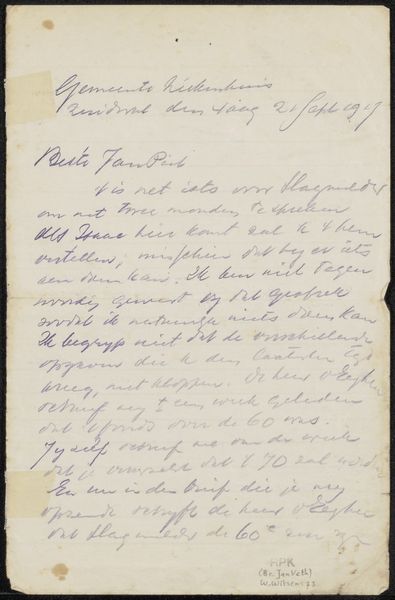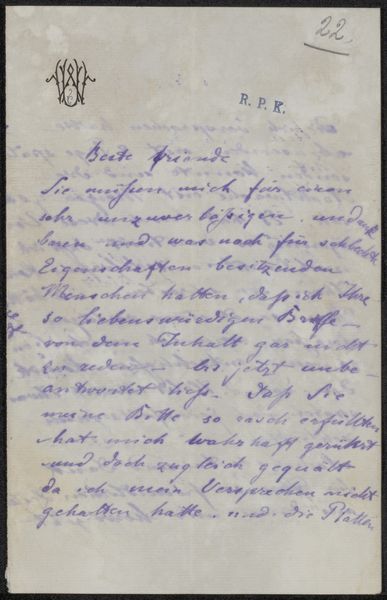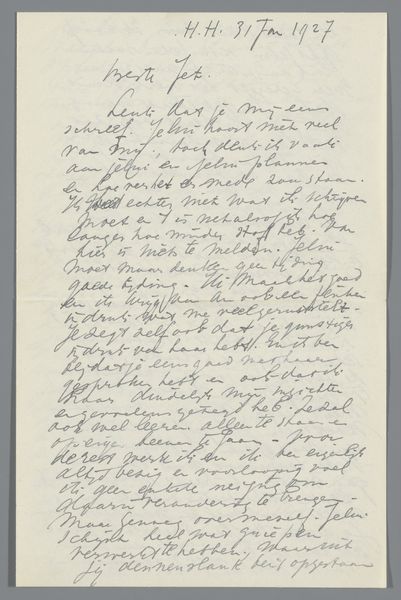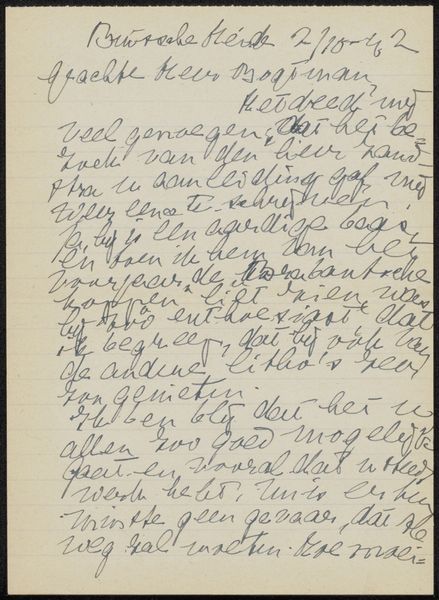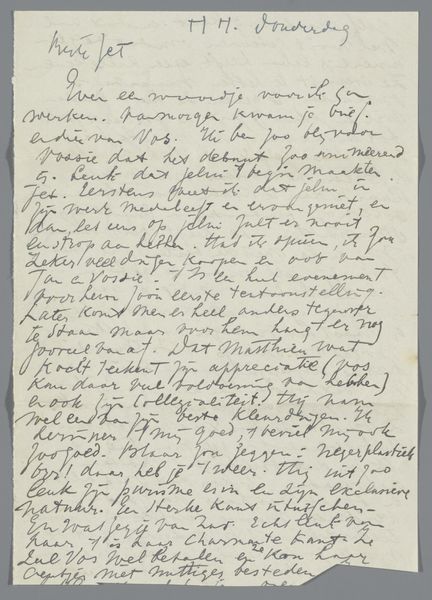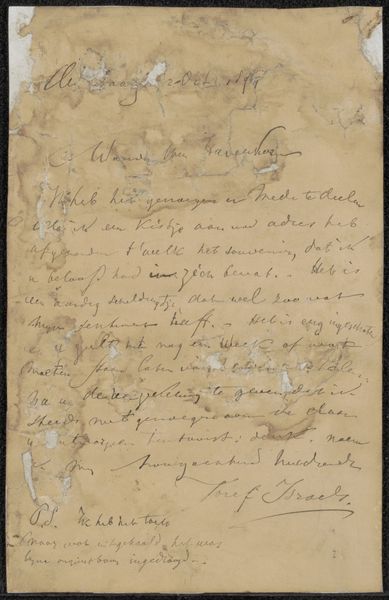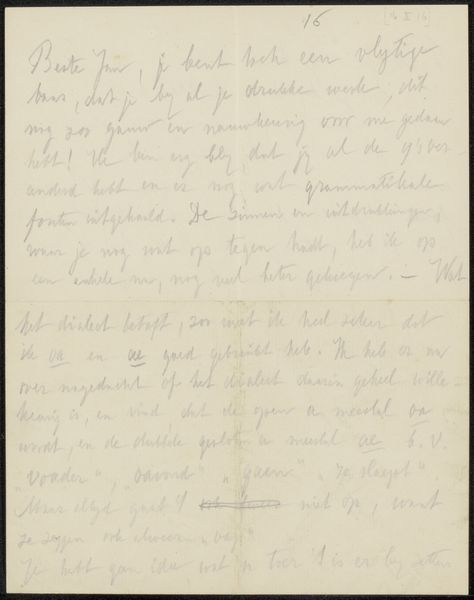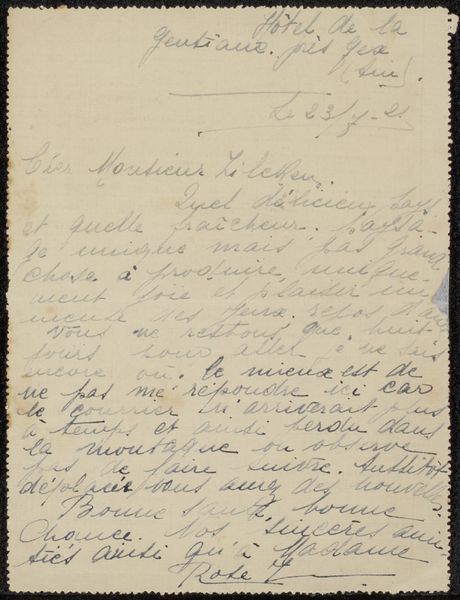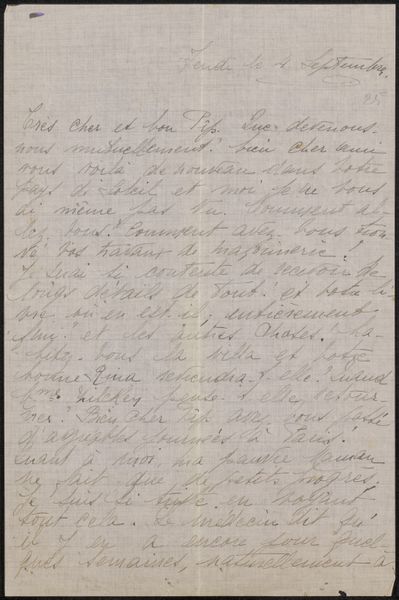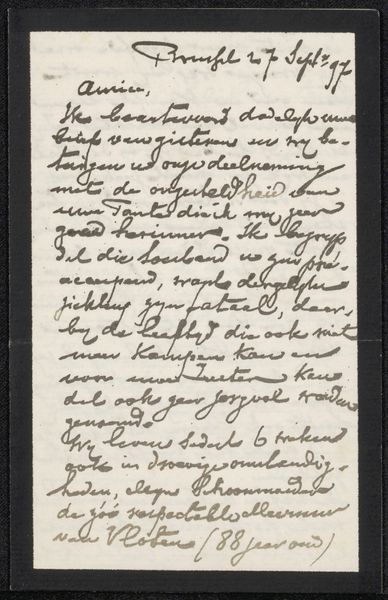
drawing, ink
#
portrait
#
drawing
#
ink painting
#
ink
#
intimism
#
symbolism
#
watercolor
Copyright: Rijks Museum: Open Domain
Editor: Here we have Jac van Looy’s "Brief aan Jan Veth," made with ink and watercolor between 1885 and 1886. The intimacy of the script and the use of ink suggest a personal quality, like glimpsing a private correspondence. What catches your eye when you look at it? Curator: Indeed. Focusing on the materiality, consider the paper itself – the gentle yellowing indicating age and the visible horizontal lines providing a rigid structure upon which the fluid ink is applied. Observe how the hand's pressure varies, creating a textural depth within the uniformity of the written script. Notice, also, the smudges and imperfections, perhaps fingerprints, suggesting the artist's physical presence. Do you agree that these physical qualities enhance the expressive qualities of the piece? Editor: Absolutely. I hadn’t really considered the physical object itself. So, what can we learn from analyzing the formal elements here? Curator: Consider how the linearity of the handwriting and the rectangular format interact. The work exists as both text and form. It's also about texture, color and form. A semiotic perspective, one can read beyond its explicit linguistic meaning to investigate broader concerns relating to human connection and intimacy in a physical way. The work asks viewers to confront their ideas on communications, on art and the artist. It encourages further conversation between people about its existence as an art object. What did you get from that reflection? Editor: It has made me reflect on what happens behind the artwork itself and appreciate what the materiality of this object shows of its creation.
Comments
No comments
Be the first to comment and join the conversation on the ultimate creative platform.
